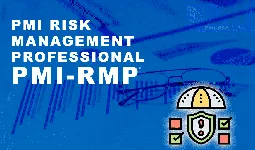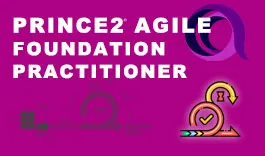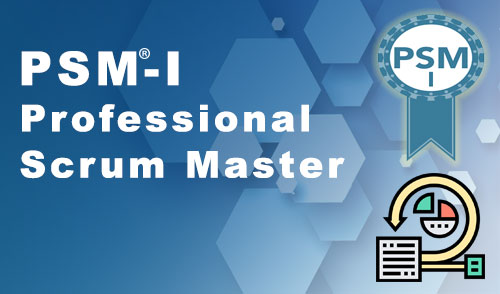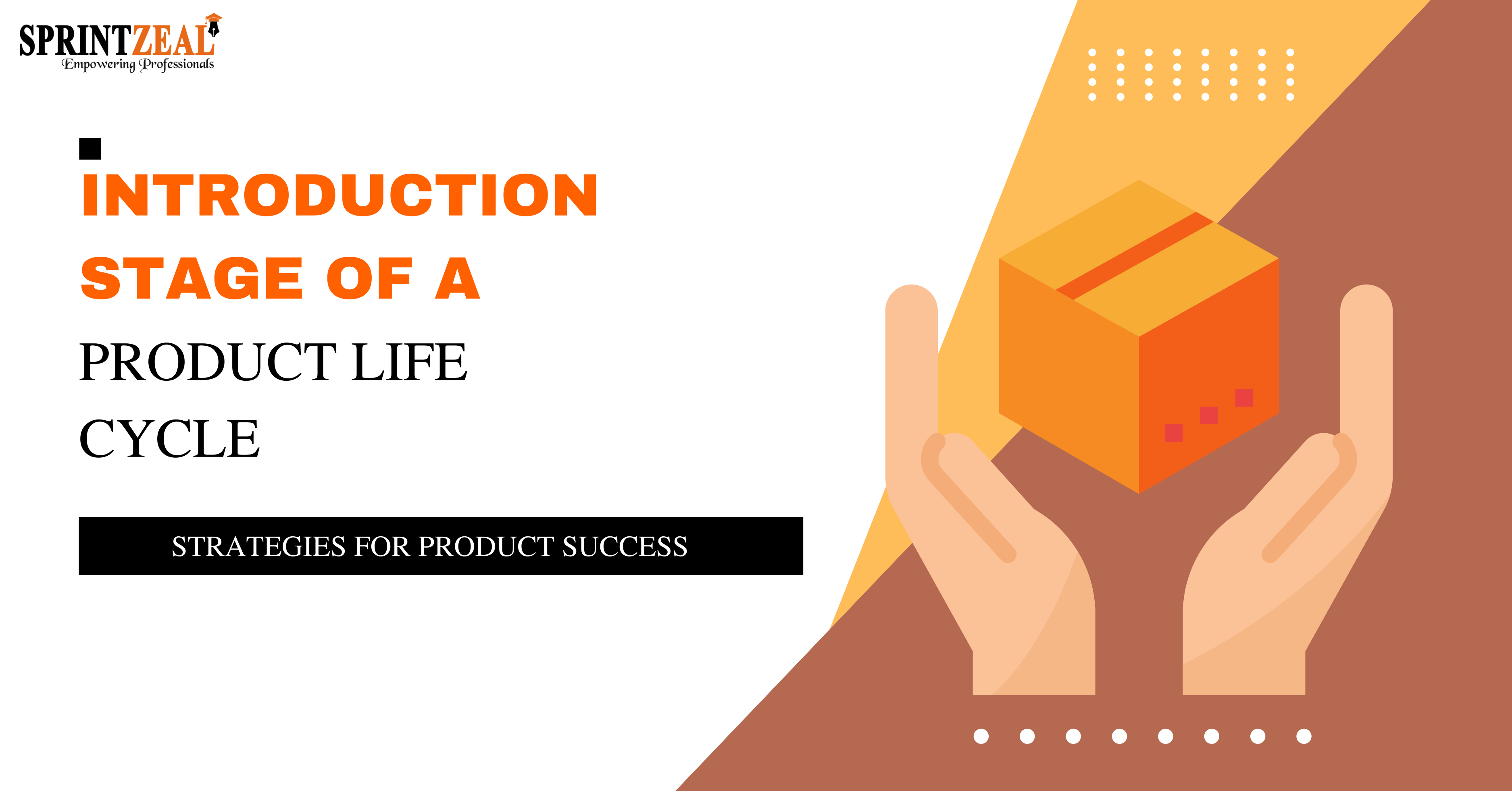Agile Manifesto - Principles, Values and Benefits

Table of Contents
Introduction to Agile Manifesto
Understanding the Agile manifesto for the uninitiated may be a little daunting. But those in the knowhow can understand it’s a manifest Agile Methodology that almost every organization makes use of, especially in the form of Gantt charts and the waterfall project framework.
The relevance of Agile benefited software development when it was first introduced later. The method was adopted by other industries as well which increased job demand in the agile field.
The progress is more flexible, and changes can be incorporated as necessitated without having to lose time or funds and yet get the project done on time.
There were hours and hours spent on the requirements gathering process, and the implementation part of the time lag would cost the organization very dear. All this can be done with the help of the values of agile.
Why Use Agile Manifesto Principles?
The use of manifest Agile brought in a revolutionary change in how projects were handled. Since the 90s software developers understood there had to be a close tandem in how the processes had to be followed right from
- the forming the teams
- bringing the stakeholders for the project
- regular addition of business value to the product and beyond
- setting up a self -organizing teams
Though there was a broad perspective to the thought process mentioned above, the Agile Manifesto actually put it in a codified manner so that it became a set of principles that could be utilized as a standard for any kind of industry to follow and regulate their work as they wanted.
What Agile Manifesto Can Do?
The agile methodology has helped the industry to cope with changes and respond to them quickly and try to make a success of the project undertaken. The risks are plenty and the need to adapt and move forward to be efficient as possible.
It is to lower the rate of discrepancies by streamlining the entire process with the help of the Agile framework.
The structure of Agile isn’t rigid and can be modulated according to the needs of the project type and the changing circumstances. It is commonly used and known as the manifesto for agile software development.
Understanding Agile Manifesto Meaning
With the help of agile techniques, the project team can self-organize and be more productive with cross-functionality.
The team needs enough expertise in finding solutions for which they have to acquire several skillsets when they encounter and deal with the problems and risks that come by. It will be the guiding point in terms of behaviors and priorities that have to be needed to function autonomously.
In using the Agile values and principles, managers will be able to will help the team members to find their goals and make sure that everyone is aware of the guidelines.
Understanding the Agile Manifesto Values and Principles
The agile manifesto runs to four fundamental values and twelve agile principles that were put in place to guide software development, which later on worked well for other projects in various industries.
• According to the agile values, one of them mentions that the processes, as well as the tools, users aren’t responsive if there aren’t interactions or people who make use of them
• Every project can make use of the agile framework, but the documentation part will surely stay
• Agile depends largely on collaborating with the client and their requirements. The entire product lifecycle will evolve on the feedback generated through customer relationship
• Agile sprints are responses to every little change in the plan and adjusting the change as it comes. The framework is built to ensure that every change works in favor of the project. You can look forward to agile mandates and zero documentation.
How Four Values of Agile Work in a Project?
• To elaborate on the principles stated above, which can check out that the framework enables the project to understand the needs of the organization as well as work on the client's requirements.
The responses have genuine solutions that can drive the development of the project accordingly with the help of tools and processes. It worked well for the agile software manifesto.
• Documentation may seem a tedious job that requires every detail to be noted and filed for future records. Since it is a necessity for every project, it cannot be left out. But, the agile framework, on the other hand, will help you streamline the process, which will avoid a lot of hassles that come in the way of documentation.
• The traditional way of project management involved the customer, perhaps at the beginning of the project, to jot down the requirements and possibly deliver the finished project. But in the Agile method, the customer is involved throughout the project lifecycle, and the feedback at every point is inclusive of the progress of the project until it is done.
• Every project may not work in a controlled manner because changes can happen, and there is a need to accommodate them. Agile allows this, and you can incorporate these changes and move on in the project to bring in a good result.

Explore - Agile Management Certification
12 Agile Principles
The manifesto also contains twelve principles of agile that need adhering to,
• Customer satisfaction is the prime goal that needs to be catered to at every point of development right to the delivery of the product or service
• The ability to incorporate changes even in the later stages of development is what principles from Agile allow and how they can add a competitive edge to the product as well as cater to the customer demand as well.
• Shortening the schedule of delivery and making sure that the product is worked on efficiently and engaging in lessen time to deliver the product or service.
• The need to collaborate both with the developers and the stakeholders is crucial for the project to come together as planned.
• The projects can be developed with a spirited team and the right environment for them to thrive and use their maximum potential to deliver the product. It is also known as the agile development manifesto.
• The need for personal interaction is vital to get the team into confidence and make sure that the project is implemented as required
• Agile works based on the fact that everything on the project is in working condition and progress and thus can be measured
• When you implement agile principles, the persons involved with the project right from the stakeholders to the developers and ultimately, the consumers will know and control the pace of the project. the project will aim for a sustainable development
• The use of enhanced technical skills to ensure that the best of the processes can make the project distinguished
• Optimizing resources, and time and maximizing the results but keeping the whole process less complicated too
• The best-skilled teams that are put together can bring in the best of the architecture and design elements that adhere to the requirements
• The team should have regular communication, which allows them to fine-tune the aspects and bring in more effective strategies. If any changes are required, they can be met, and adjustments can be roped in as per necessity.

Agile is not a rigid set of rules which bind any team or the project leader, but its flexible nature of principles that can be adopted as per the project makes it sound like a methodology.
In reality, it encompasses all the processes that traditional project management does but in a more refined way with forefront clarity, thus restoring balance. Planning now can be worked around the risks that changing environments throw upon us and be able to usher in better possibilities to get the required results faster.
There are several Agile proponents and users around the globe, and all have felt that the four values of agile can help do the following for a project in a better way,
- Planning
- Monitoring
- Reporting
The progress is more flexible, and changes can be incorporated as necessitated without having to lose time or funds and yet get the project done on time. There were hours and hours spent on the requirements gathering process, and the implementation part of the time lag would cost the organization very dear. All this can be done with the help of the values of agile.
Key Principles of Agile best used in a Project
The below methods are how key principles of agile are best used in a project,
Working on a timescale
As technology advanced and the usage of software applications made the time gap lesser and lesser by the day.
There was a need to bring changes in the way the processes were done in agile, which became the vehicle for change.
Though the software industries were the first to make use of the Agile framework, other industries reciprocated the need for such methodology in their project management as well.
Adding value to the product
Since the need to add value to the product or the service each time a project came about, there was increased responsibility each time.
To build up to the expectations as well as confront the risks and issues that crop up, a principle of the agile framework does come in handy for the team and manager to rely on and work out some stability in the processes.
Yet have the needed flexibility, leaving room for change and bringing in or taking out any of the components when getting the project done.
Making optimal use of the resources
The Agile models and manifesto can be utilized to plan your projects in detail and look into the shortcomings in how resources or even requirements may have been utilized.
Many models and frameworks were tried and tested. Each had a weak link, but the four values of Agile seemed to fit the bill in all aspects.
Changes in the way the market behaved, and technological advancement were pivotal to find and something that catered to all aspects and gave them the best outcomes.
Flexible framework
The rigidity of what was applied previously in project management had become a foregone solution. But, people saw that new approaches like the Agile way of handling the project.
It could drive changes without any change in resources, but, the method of managing the potential inputs in a way that it can be made into the best deliverable possible.
These principles of agile software development have been great for expediting projects.
Agile team need to comply with the values and principles
The team may have access to tools and other resources that fuel the project. But as you proceed in the project, there will be several stumbling blocks and other miscommunications that hamper the progress of the project.
These issues have to be ironed out and streamlined with the help of the twelve principles of agile methodology, which can guide the project manager as well as the team in the right direction.
Comprehensive data and overwhelming changes get difficult to handle. In such cases, the processes have to be guided every step of the way.
Allowing each team member to contribute to the full potential ensures the processes, they undertake are aligned with the project as a whole as well.
The stakeholders and the client can suggest helping make the decisions while collaborating with the team at each point of the project.
The involvement to a such extent may sound overbearing to the traditionalists. Agile makes sure that it is how you will bring out the end product as desirable as envisioned at the beginning of the project.
Co-existing with traditional project management
The documentation cannot be neglected just because you have been implementing an agile approach to project management. The sole focus needs to be looking into the specifications that are required to complete the project.
During the project course, certain specifications may lose relevance and new changes would have to be incorporated so that the project becomes viable.
In such cases, the team has to look into the working software to adapt to the changes and try and meet the customer's expectations rather than heaps of documentation.
Getting a working product ready at all times
A working product will be a better indicator that aligns with the client's requirements rather than the past document created months ago, listing out the expectations and needs.
Along the way, those needs and expectations change which may be subtle or major changes as many external forces are involved when handling projects.
Documentation still needs to be done as it records all history and changes incorporated.
Testing essential at various points
There is a need to test the product during the agile framework sprints. This way, it will eliminate the chance to spend excessive time and money on the next testing phase preventing disappointment.
Testing in the sprints will allow us to rectify the issues that might have cropped up, and be able to inculcate the changes required without much hassle.
Methodology allows collaboration
The agile methodology can be used to the project team’s advantage when for negotiation and collaboration related to the project, either financially or the end product.
Each part of the discussion can help to correct the project course if the stakeholders/client needs changes. Thus, the deliberations can end up in something fruitful when communication is barrier-free.
The vision for the project can be redefined as per the requirements stated and corrected.
All can be part of the project from day one
Traditionally, it was only during the initial documentation phase negotiations that will be held and consultations considered by all parties concerned.
After which the project would be underway till project completion, the client or stakeholders get a chance to look into the final product directly with no conversations or in-process products well.
It made it difficult then to go back to the drawing board and make changes if the clients weren’t stratified, a whole lot of time and money would go to waste. The agile framework has resolved this problem to a great extent. Agile has allowed the interaction of the customer throughout the product lifecycle.
This enables the team to confer real-time clarifications with the customers and be able to align the work as per the customer priorities.
Allows changes in the project at any point of time
Using a standard process may have been an easy accomplishment for all projects that are undertaken when utilizing the traditional way to do so. But changes happen because of external events, or the customer will want them to be made.
When using standardized approaches, it’s hard to penetrate the framework and make use of the changes suitably, and end up with a good result. It is also the fear that it would be an expensive affair to carry out.
Agile methodology, on the other, will readily incorporate the changes without having to find and conceptualize ways to bypass the standardized methods. As the 12 agile principles and values show that changes can be used for the benefit of the project and enhance the end result.
The agile manifesto will help the organization realize that getting into the changes will help take the project to different levels. It will meet expectations that could not be done when using the standardized procedure.
Helps in making the project viable
It gives the opportunity to make the shift when receiving feedback and change the priorities as necessitated. The features can be added, thus making the project more viable.
The plan is open to changes that can actually set about bringing out the best work from the team members, to keep innovating and thinking on their feet as new suggestions come up.
Works on customer satisfaction
The agile framework helps to keep the customer satisfied as they know what they are getting right from the beginning and see the changes done. This will bring in its own suggestions and be a part of the project lifecycle.
There is no ambiguity whatsoever, and every time you are adding value as you make changes. The customer definitely becomes the project sponsor, and when the project is done you will find that the end user is the customer as well but can also be defined as a user.
Changes can be implemented at any stage
When applying Agile, the team can readily apply changes even when they are late in the development of the product. The agile framework allows the organization to harness the change in a better way and turn it into an advantage.
Every sprint is checked to help keep the quality intact. Changes may seem time-consuming with Agile, but will not cause a delay in the project and will help build a better schedule to churn out the project.
How the Principles of Agile Methodology affects the Project?
The reasons could be any,
• Making a product as per the initial requirements and delivering wouldn’t serve the business needs as, over time, the product will be redundant and will be of no use to the customer. There will be sufficient collaboration to work out the things that will ensure the product will meet the needs and more when done.
• The timescales can be changed when using agile documentation as it helps to divide the schedule into sprints, which in turn can be scaled out for the project work. It also helps to check on the project regularly and get the quality looked into as well as incorporate the needed changes as per the feedback.
• Agile makes sure that you will be working together not only as a team but the people who invest as well the customers can put forth their ideas and requirements at every phase of the project and be contributors in their own way.
• The team has to be motivated, and they could then channel their potential to successful projects and deliver a superior product. They will need support from the organization and trust from the stakeholders and customers alike to keep them giving their best for the project.
Allowing them to make decisions or able to provide feedback on how they could implement the ideas is necessary for the smooth functioning of the project team, which eventually impacts their productivity as well. It all boils down to the four values of agile to deliver and bring forth the best despite changes even in the later developmental stages of the project.
• Personal interaction plays a huge role, and this will ensure that the team or the customers will be able to gauge the level of trust and understanding based on which the project stands. It is crucial to build this and work on it from time to time, also known as forging a bond.
• Creating sustainable development is the motto that Agile follows and is well laid out in the principles that are shared. The consistency and scale may vary as the changes are incorporated as there may be a need for extra funding or time to bring in the new idea in the sprint schedule, but in the overall project, the time scales are kept tight. Agile values help to bring competency to the project at hand.
• The pace of the project should be consistent from the beginning, and slackening cannot be a viable option for the team or the organization. The changes and feedback keep coming issues may crop up. Several other hurdles may stick their ugly head out, but the team has to be prepared to work on the problems and deliver each time no matter what comes by.
• The team has to strive for excellence and work for good product design and be able to take up the changes that come and design a quality product. The use of agile principles helps combat consistent changes made to the project.
• The product has to be uncomplicated and give scope for any changes even when you try to do it at a later stage. All this is to be done within the confines of the definition of the product.
• With the teams being self-organized have a better scope to take ideas to different levels and make better innovative and creative inputs in the designing process.
• There has to be a need to reflect and self-improvement so that results can be bettered, and the pace can be hastened as well.
The manifesto for agile software development would have given the impetus for the popularity of the framework, but now you can reap the benefits in every project.
The relevancy of the project remains long after the project cycle gets over. The iteration of changes and incorporating them into the project would make the project viable for all those involved in the project.
The values and principles can be applied to any industry and looked up for making the project from the best of means and getting the deliverables as desired.
Takeaway
The Agile manifesto has taken prominence in every project because of the customer-centricity that comes with using agile. It may have begun with the software industry taking up this framework seriously, but now all industries have followed suit and embraced the agile methodology.
To get full details about Agile training courses and top agile certifications, reach us at Click Here or chat with course expert
Sprintzeal also offers other popular Agile Management training in India like,
Subscribe to our Newsletters
Popular Programs
PSM® - Professional Scrum Master Certification
Live Virtual Training
- 4.9 (75 + Ratings)
- 64k + Learners
Trending Posts
Agile Release Plan Guide
Last updated on May 9 2023
Scrum Ceremonies Guide
Last updated on Jun 6 2023
Successful Product Strategies for Introduction Stage of Product Life Cycle
Last updated on Oct 19 2023
Devops Tools Usage, and Benefits of Development Operations & VSTS
Last updated on Oct 18 2022
SAFe Implementation Roadmap Guide
Last updated on Sep 13 2024
Agile Scrum Methodology - Benefits, Framework and Activities Explained
Last updated on Mar 25 2024
Categories
- Agile Management 54
- AI and Machine Learning 42
- Big Data 53
- Business Management 51
- Cloud Computing 44
- Digital Marketing 56
- Information Security 8
- IT Hardware and Networking 17
- IT Security 103
- IT Service Management 29
- Leadership and Management 1
- Microsoft Program 2
- Other 43
- Programming Language 31
- Project Management 162
- Quality Management 75
- Risk Management 8
- Workplace Skill Building 2
Trending Now
List Of Traits An Effective Agile Scrum Master Must Possess
ArticleDevOps Vs Agile Differences Explained
ArticleDevops Tools Usage, and Benefits of Development Operations & VSTS
ArticleAgile Scrum Methodology - Benefits, Framework and Activities Explained
ArticleGuide to Agile Project Management 2024
Article10 best practices for effective DevOps in 2024
ArticleGuide to Becoming a Certified Scrum Master in 2024
ArticleWhy Should You Consider Getting a Scrum Master Certification?
ArticleCSM vs CSPO: Which Certification is Right for You?
ArticleAgile Methodology Explained in Detail
ArticleAgile Project Management Explained
ArticleEssential Tools for Agile Project Management 2024
ArticleEverything about Scrum Methodology
ArticleScrum Workflow - A Step by Step Guide
ArticleLatest Agile Interview Questions and Answers To Look For In 2024
ArticleScrum Interview Questions and Answers 2024
ArticleTop Scrum Master Responsibilities 2024 (Updated)
ArticleProduct Life Cycle in Marketing: Essential Strategies for Product’s Success
ArticleDevOps Engineer Interview Questions - Best of 2024
ArticleDevOps Engineer - Career path, Job scope, and Certifications
ArticleBusiness Agility Guide - Importance, Benefits and Tips
ArticleScrum vs Safe – Differences Explained
ArticleCSM vs. PSM - Which Scrum Certification is Better?
ArticleSAFe Implementation Roadmap Guide
ArticleAgile Release Plan Guide
ArticleAgile Environment Guide
ArticleAgile Coaching Guide - Best Skills for Agile Coaches
ArticleAgile Principles Guide
ArticleSAFe Certifications List - Best of 2024
ArticleAgile Prioritization Techniques Explained
ArticleScrum Ceremonies Guide
ArticleProduct Owner Certifications List
ArticleScrum of Scrums Guide
ArticleWhat is DevSecOps and its Importance
ArticleData Processing - A Beginner's Guide
ArticleDevOps Career Guide 2024
ArticleStakeholder Engagement Levels Guide
ArticleScrum Master Career Path Explained
ArticleScrum Career Path Explained
ArticleTop Git Interview Questions and Answers [Updated 2024]
ArticleA guide to Agility in cloud computing
ebookProduct Roadmap: An Ultimate Guide to Successful Planning and Implementation
ArticleDMAIC Methodology - The Ultimate Guide
ArticleProduct Life Cycle Strategies: Key to Maximizing Product Efficiency
ArticleScrum Master Salary Trends in 2024
ArticleProduct Life Cycle Model: A Guide to Understanding Your Product's Success
ArticleWhat is a Product Owner - Role, Objectives and Importance Explained
ArticleSuccessful Product Strategies for Introduction Stage of Product Life Cycle
ArticleUnlocking Career Opportunities in Product Management: Your Roadmap to Success
ArticleSaturation Stage of Product Life Cycle: Complete Guide
ArticleCutting-Edge Technology of Google Cloud
ArticleHow to Write an Executive Summary for a Business Plan?
ArticleImportance of Procurement Management Software in Modern Business
Article

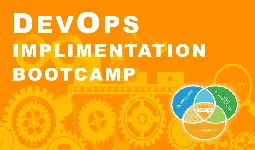

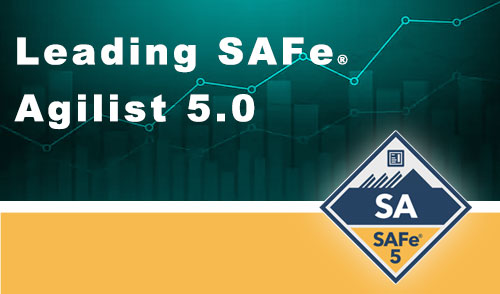

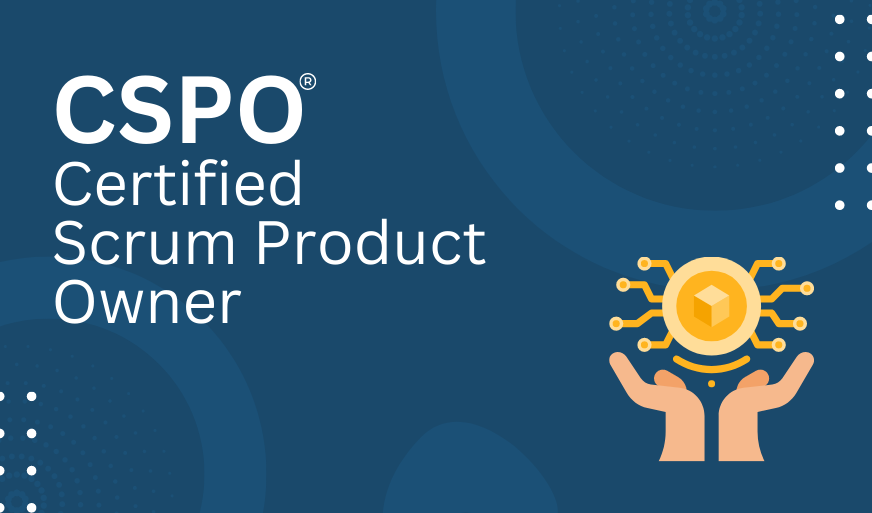
.webp)

